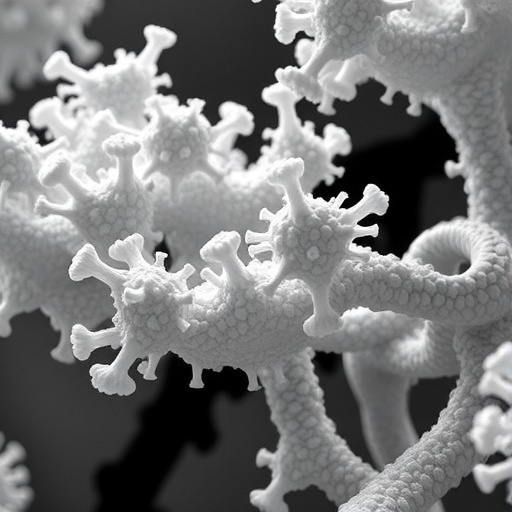In a remarkable leap forward in molecular physiology, Japanese scientists have unveiled the intricate mechanisms by which Aquaporin 10 (Aqp10) paralogs discriminate between closely related molecules such as urea and boric acid. This breakthrough elucidates long-standing mysteries about the selective permeability of aquaglyceroporins—a specialized subgroup of aquaporins responsible for conducting water and small neutral solutes across cellular membranes. Leveraging structural comparisons and cutting-edge computational modeling, the researchers pinpointed subtle amino acid variations that dictate the functional differences among Aqp10 paralogs, offering profound insights into membrane biology and protein evolution.
Aquaporins are integral membrane proteins embedded in cellular bilayers, crucial for regulating the transport of water and small solutes. Among these, aquaglyceroporins serve a distinct role, facilitating the passage of glycerol alongside water. However, their selectivity extends beyond glycerol, with some variants exhibiting permeability to other small molecules like urea and boric acid. The molecular underpinnings that define this selective permeability have remained elusive, obscuring our understanding of how slight structural modifications influence channel function in physiological contexts.
The research team at the Institute of Science Tokyo, led by Associate Professor Akira Kato and collaborators, embarked on a comparative study of Aqp10 paralogs found in ray-finned fish species. These species harbor two Aqp10 versions—Aqp10.1 and Aqp10.2—that display contrasting permeability profiles. Whereas Aqp10.1 channels allow both urea and boric acid to traverse the pore, Aqp10.2 channels largely exclude these solutes while permitting water and glycerol passage. This clear functional divergence sparked an investigation into the structural elements responsible for molecular discrimination.
Delving deeper using phylogenetic analyses and computational structural biology techniques, the researchers identified that variations in the amino acid composition within the aromatic/arginine (ar/R) selectivity filter region are pivotal. This filter, a key determinant of pore size and solute specificity, presented two critical sites—denoted positions 1 and 3—where bulky aromatic residues were selectively present in Aqp10.2 paralogs. These aromatic side chains, protruding into the pore lumen, effectively narrowed the pore diameter, creating a steric barrier that limited the diffusion of urea and boric acid without compromising the transport of glycerol and water.
To experimentally validate these findings, the researchers engineered site-directed mutants by substituting the bulky aromatic residues at these positions with smaller amino acids. These mutagenic interventions yielded a functional reversal: channels originally impermeable to urea and boric acid regained their permeability to these molecules. Remarkably, the restoration of permeation did not adversely affect the passage of glycerol or water, underscoring the precision of molecular sieving imparted by these specific residues. This remarkable observation affirms the notion that amino acid side-chain size at key selectivity sites is a fundamental modulator of channel function.
A quantitative analysis underscored a robust inverse correlation between the combined molecular weights of the amino acids at positions 1 and 3 and the effective pore size. This relationship translates directly into transport capacity: heavier side chains correspond to narrower pores and reduced permeabilities for molecules like urea and boric acid. Such a straightforward metric provides a predictive framework, enabling the inference of channel properties from primary amino acid sequences alone, circumventing the need for laborious structural characterization.
From an evolutionary viewpoint, these findings illuminate how subtle genetic variations—mere single-point mutations—can recalibrate critical physiological functions, allowing organisms to adapt to diverse environmental demands. The evolutionary trajectories of Aqp10 paralogs among fish species exemplify how molecular evolution tunes membrane permeability properties to meet specific osmotic and metabolic needs, facilitating survival in varied aquatic habitats.
Beyond its biological significance, this work has substantial implications for biotechnology and medicine. The ability to predict aquaglyceroporin substrate specificity from genomic data empowers researchers to annotate uncharacterized channel proteins newly discovered through high-throughput sequencing. Such predictive capability accelerates the discovery pipeline, potentially uncovering channels relevant to cancer biology, renal physiology, and agricultural biotechnology, where solute transport modulation could be exploited for therapeutic or enhancement purposes.
Furthermore, the study highlights the elegance of protein structure-function relationships, illustrating how aromatic residues strategically positioned within a selectivity filter serve as molecular gatekeepers. This insight enriches our understanding of biophysical principles underlying solute transport and challenges researchers to explore analogous mechanisms in other channel families, possibly unveiling universal rules governing membrane transport.
In conclusion, the Institute of Science Tokyo team’s comprehensive analysis elucidates a brilliant example of how molecular architecture encodes functional selectivity in aquaglyceroporins. By marrying evolutionary biology with advanced molecular modeling and experimental mutagenesis, they have charted a clear path from amino acid sequence to channel function that has eluded researchers for decades. Their work promises to propel forward the field’s capacity to interpret membrane protein functionality, with profound reverberations across life sciences.
As genome sequencing continues to uncover an ever-expanding repertoire of channel proteins, insights like these will be instrumental in harnessing the full potential of biological transport phenomena. The findings provide a scientific foundation for future innovations that may include the design of synthetic channels with tailor-made permeabilities or therapeutic strategies that modulate transporter functions in disease contexts. Ultimately, this research represents a landmark moment in decoding the molecular grammar that governs cellular selectivity and membrane physiology.
Subject of Research: Animals
Article Title: Aquaporin 10 paralogs exhibit evolutionarily altered urea and boric acid permeabilities based on the amino acid residues at positions 1 and 3 in the ar/R region
News Publication Date: 25-Aug-2025
Web References: 10.1152/ajpregu.00212.2024
Image Credits: Institute of Science Tokyo (Science Tokyo), Japan
Keywords
Life sciences, Physical sciences, Chemistry, Chemical compounds, Organic compounds, Biochemistry, Biomolecules, Amino acids, Amino acid sequences, Physiology, Urea




